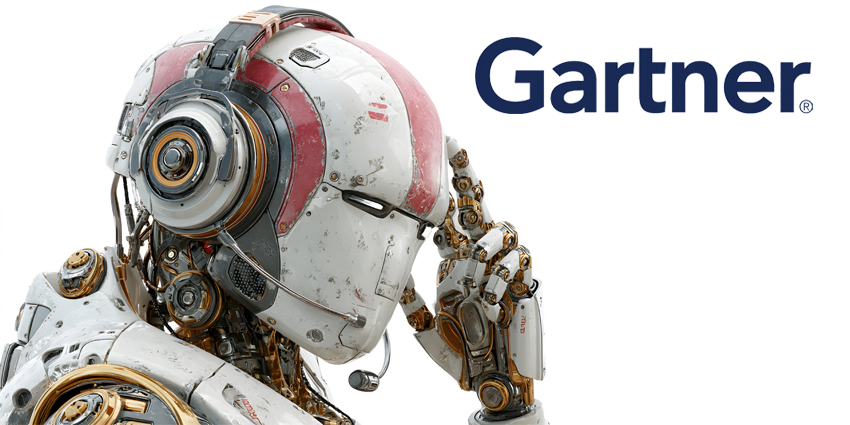The workforce optimization technology industry is constantly evolving, and it’s essential to stay up-to-date with the latest trends.
In the age of “Total Experience”, business leaders are gaining a new understanding of just how important other “experiences” are when it comes to ensuring good CX. Even if you have the perfect omnichannel contact centre, powerful self-service tools, and the latest technology to delight your customers, you’ll struggle to see the right results without first investing in your team.
For years, WFO (Workforce Optimisation) and WFM (Workforce Management) tools have given businesses more ways to augment team performance. As hybrid and remote work make managing and engaging staff members more complex, demand for these technologies is increasing at a record pace.
As the WFO space grows, we’re beginning to see some defining trends emerging in the industry.
In this article, we’ll discuss the hottest trends in workforce optimization technology, including artificial intelligence, cloud computing, and automation.
1. The Evolution of CCaaS
The shift to the cloud has been a consistent trend for many companies for some time now. Promising agility, flexibility, scalability, and crucial business continuity, the cloud helps businesses to thrive, even during unpredictable times. CCaaS, or “Contact Centre as a Service” solutions, have emerged as one of the more popular tools in this new cloud environment.
Combining everything companies need for CX into one convenient, cloud-native package, CCaaS solutions ensure businesses can maintain the agility they need in today’s service space. One of the biggest benefits of CCaaS solutions is how quickly they can adapt and expand to include new features and functionalities within the CX space.
As WFO investments grow, we’re seeing many leading CCaaS vendors embedding WFO and WFM technologies directly into the contact centre. This ensures companies can access all the tools they need for tracking and supporting their teams within the ecosystem they use for CX management.
2. The Rise of the Hybrid Team
Workforce optimisation technology already provided business leaders with insights into employee performance and efficiency long before the pandemic hit. However, the rise of hybrid and remote work, which exploded during the last couple of years, has certainly impacted adoption.
With fewer team members now present in the traditional office at any given time, supervisors, managers, and business leaders need the right set of tools to keep on top of their staff members. WFO solutions can help companies to track engagement, performance levels, and critical metrics, as well as ensure they can deliver guidance and support to staff wherever they are.
The rise of the hybrid team is also influencing the structure and presence of WFO tools. For instance, many solutions are now being built into business hubs like Microsoft Teams, where staff members collaborate over customer service issues. These tools also come with dashboards and insights to help staff track their own performance and compare it to their peers wherever they are.
3. Self-Service and AI
Self-service and the development of new artificial intelligence tools are two more trends we’ve seen a lot in the CX space over the last couple of years. As customers become more digitally savvy, they’re also more comfortable with the idea of completing tasks and solving problems without agent help.
Notably, however, AI-powered tools for self-service aren’t just beneficial for your customers. They can also be an extremely useful addition to the employee experience strategy. Within WFO systems, AI assistants and bots can be a fantastic way for distributed and remote employees to access help when needed most to boost their benchmarks and performance.
AI solutions can provide quick access to information for employees when they’re dealing with customer service issues or solving common problems. The same solutions can also make it easier for team members to request changes to shift patterns without disrupting the business’s productivity. AI and self-service solutions in the WFO landscape will help with everything from evaluating performance, generating scorecards, and tracking competitions during gamification events.
4. Agent Experience
Generally, workforce optimisation tools give business leaders an excellent way to track important information about team performance and efficiency. However, critical metrics like first-time resolution, CSAT scores, and the number of calls answered aren’t the only factors business leaders need to track in today’s world.
In the age of the Great Resignation, when turnover in the contact centre is higher than ever, there’s an increasing focus on empathy, engagement, and retention for crucial staff. Companies need to ensure they deliver the best possible experience to their agents to keep them as happy as possible within the workforce. This means there are new measurements to track in the WFO landscape.
Increasingly, we’re seeing the rise of software solutions tailored to capturing useful information about employee satisfaction levels and overall well-being. WFO tools are integrating with other solutions for tracking staff happiness and boosting engagement, like gamification features, rewards, and AI for tracking sentiment.
5. Omnichannel Digital Engagement
Speaking of the rising demand on WFO solutions to track a higher number of metrics and insights, it’s also worth noting that the number of channels these tools need to evaluate is crucial too. Modern Workforce Optimisation technology can no longer focus exclusively on the call landscape, and the audio conversations between customers and staff.
While audio analytics are still important, companies also need to think about how they can capture and assess information from the video and messaging space too. In fact, approximately, 71% of customers say they want brands to support them more through messaging.
Going forward, the top WFO solutions will ensure companies can collect meaningful insights from every channel where customers and agents connect. This should significantly improve the ability of companies to track not just the customer journey, but how touchpoints with agents influence the way customers interact with the brand.
6. Automation
Automation is a trend that’s been around for a while, but it’s still one of the hottest trends in the workforce optimization technology industry. Automation involves using technology to automate routine tasks, freeing up human resources to focus on more complex tasks.
One of the most significant applications of automation in workforce optimization technology is robotic process automation (RPA). RPA involves using software robots to automate repetitive tasks such as data entry, data validation, and data processing. RPA can save businesses time and money by reducing errors, increasing efficiency, and freeing up human resources to focus on more complex tasks.
Another application of automation in workforce optimization technology is workflow automation. Workflow automation involves using software to automate workflows, eliminating manual processes and reducing the risk of errors. Workflow automation can also help businesses to optimize their workflows, improving efficiency and reducing costs.







